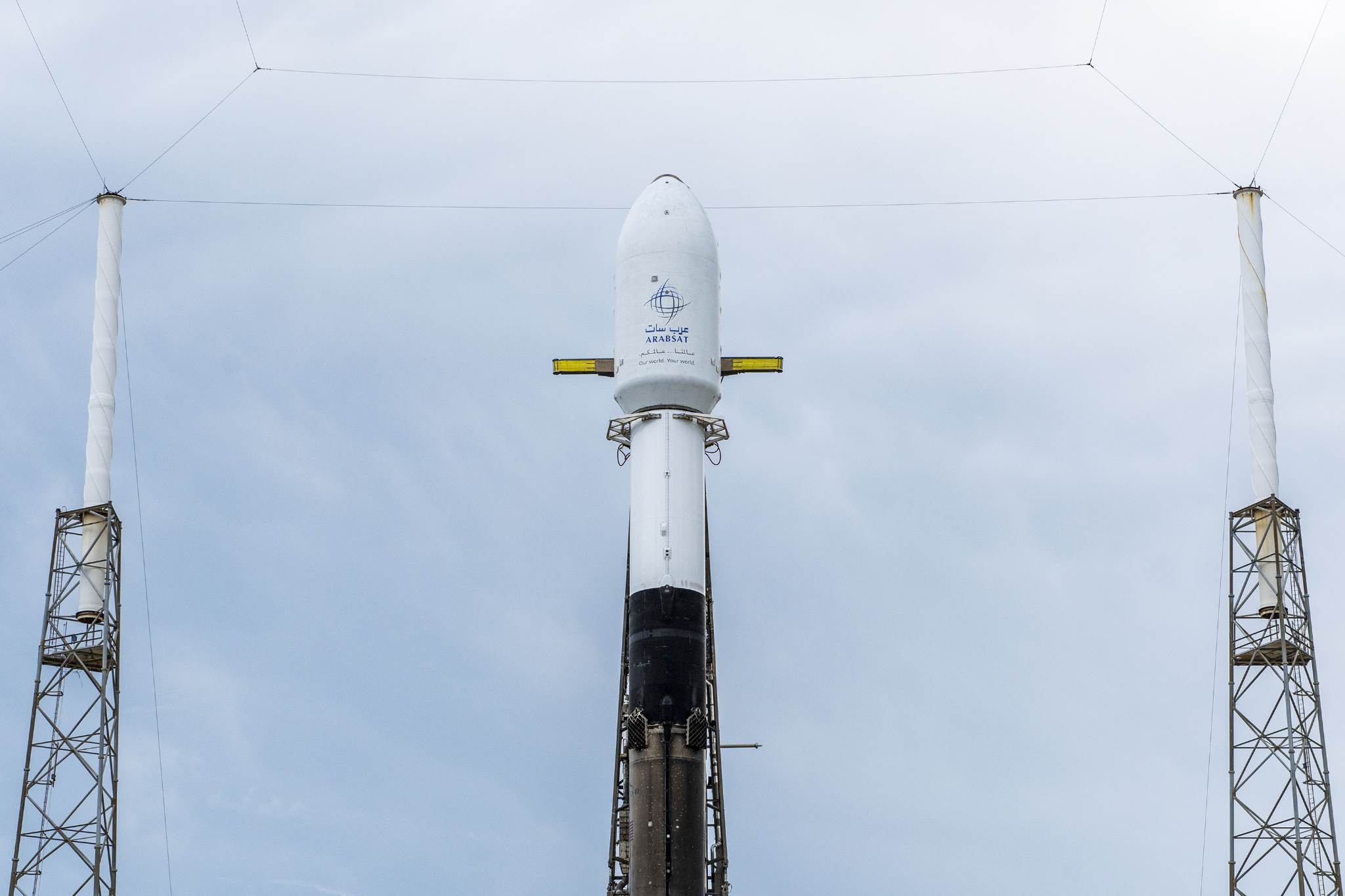
It might just be third time lucky tonight for a snakebitten Falcon 9 mission, laden with a powerful Saudi Arabian geostationary communications satellite. After Mother Nature forced weather-related scrubs earlier this week, the veteran B1062 booster—making her 14th flight and her third uphill trek of 2023 alone—is now targeting liftoff from storied Space Launch Complex (SLC)-40 at Cape Canaveral Space Force Station, Fla., at 11:25 p.m. EDT Friday for SpaceX’s seventh launch of May.
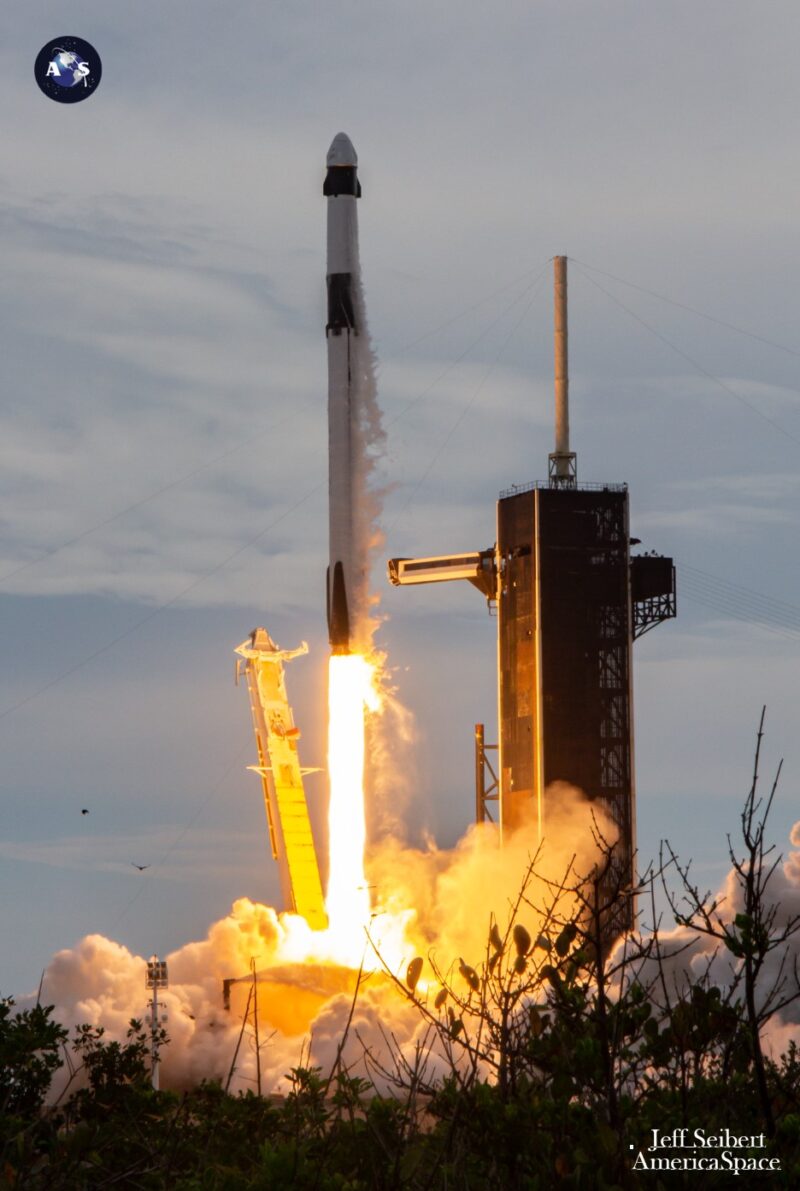
Weather has remained Florida’s overarching concern in recent days, as the Space Coast heads squarely towards its storm season. According to the 45th Weather Squadron at Patrick Space Force Base, the outlook for a pair of 127-minute “windows” on Tuesday and Wednesday nights appeared set to creep no higher than 25-percent-favorable, with “numerous showers and storms” expected and a mid-level disturbance driving concerns of violations of the Cumulus Cloud Rule, Surface Electric Fields Rule and Anvil Cloud Rule.
Buoyed, perhaps, by the success of three back-to-back missions last weekend—including the 30th overall Falcon 9 flight of the year, the 10th Falcon 9 of 2023 from Vandenberg Space Force Base, Calif., and the 10th Crew Dragon with human souls aboard—SpaceX pressed ahead with Tuesday’s opening launch attempt to fly the Arabsat-7B geostationary communications satellite, also known as “BADR-8”. The attempt benefited from an expansive 127-minute launch window, which opened at 11:25 p.m. EDT Tuesday and closed in the pre-dawn darkness of Wednesday morning.
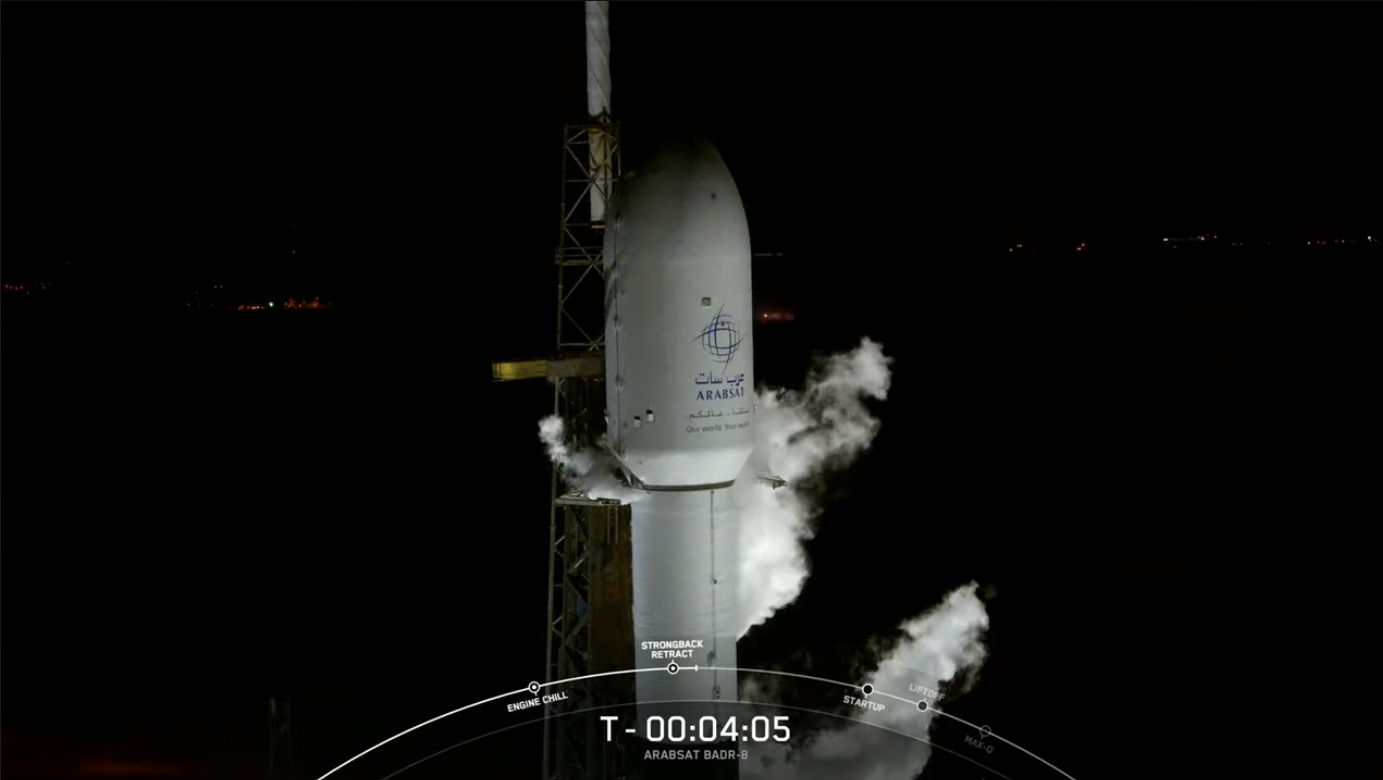
But it was not to be. As the weather stubbornly refused to play ball, teams adjusted their targeted T-0 point firstly to 12:55 a.m. EDT Wednesday and finally the very end of the window, before ultimately standing down for the night.
Hopes of flying during the same launch window overnight on Wednesday/Thursday also proved fruitless, so poor was the weather. This time, SpaceX stood down for a couple of days “to allow more time for pre-launch checkouts and for weather conditions to improve”.
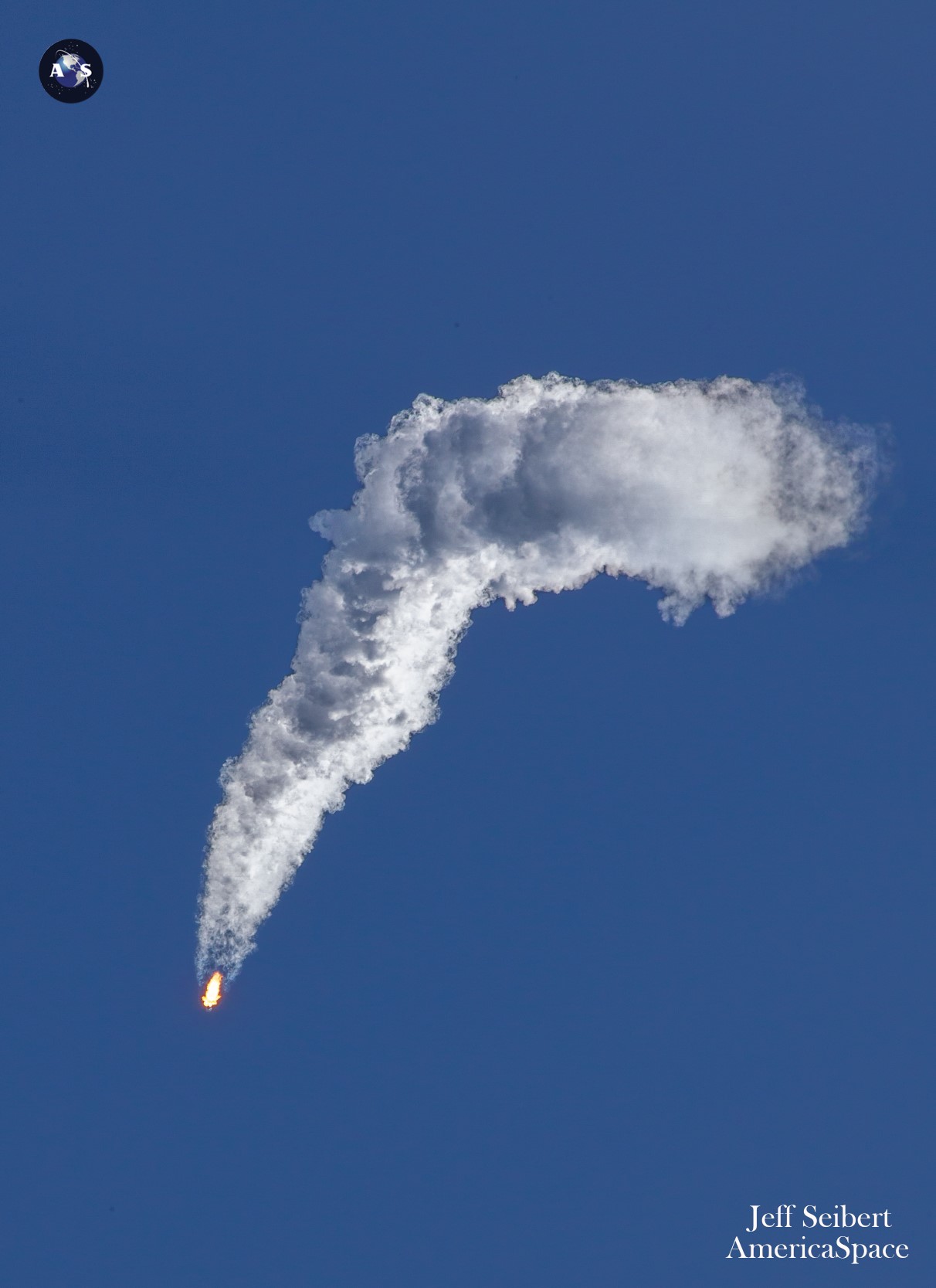
And improve they may. In an update after Wednesday night’s scrub, weather predictions from the 45th looked more palatable as the weekend neared, approaching 60-percent-favorable on Friday night and rising to 80 percent on Saturday night.
“The complex and active weather pattern will remain in place through the remainder of the work week, due to a lingering surface boundary, upper-level troughing and plentiful moisture,” it explained. “By Friday, the center of low pressure will be off the coast, to the northeast of the Spaceport.
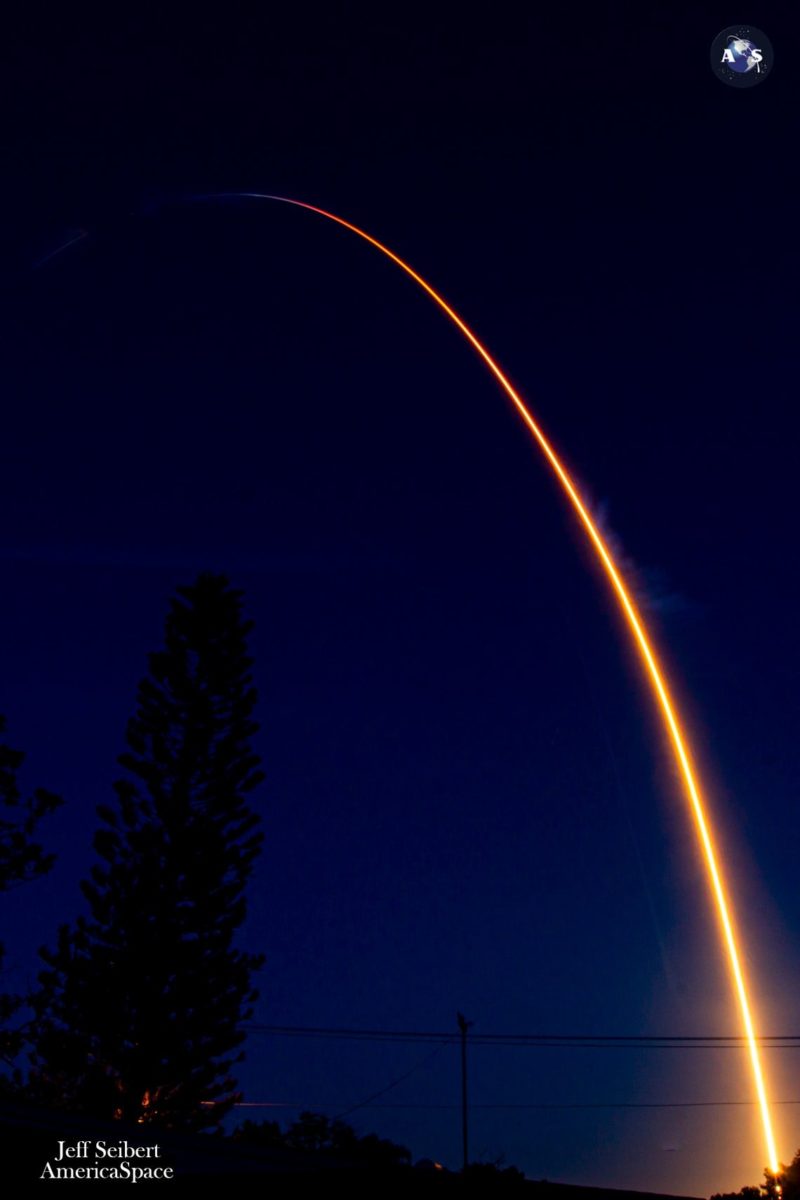
“The low’s position will bring breezy northerly winds, along with bands of scattered coastal showers,” the 45th added. “As a result, the main concerns will be the Cumulus Cloud Rule and the Surface Electric Fields Rule associated with these showers.” It was also noted that the Space Coast may finally break out of the “wet pattern by Saturday”.
Awaiting B1062’s 14th return from the edge of space will be the Autonomous Spaceport Drone Ship (ASDS), “Just Read the Instructions”, which put to sea last weekend out of Port Canaveral and currently resides about 420 miles (680 kilometers) offshore in the Atlantic Ocean. After boosting the Falcon 9 aloft for the opening 2.5 minutes of flight, B1062 will separate from the stack and return to land on the drone ship’s deck some eight minutes and 30 seconds into tonight’s mission.
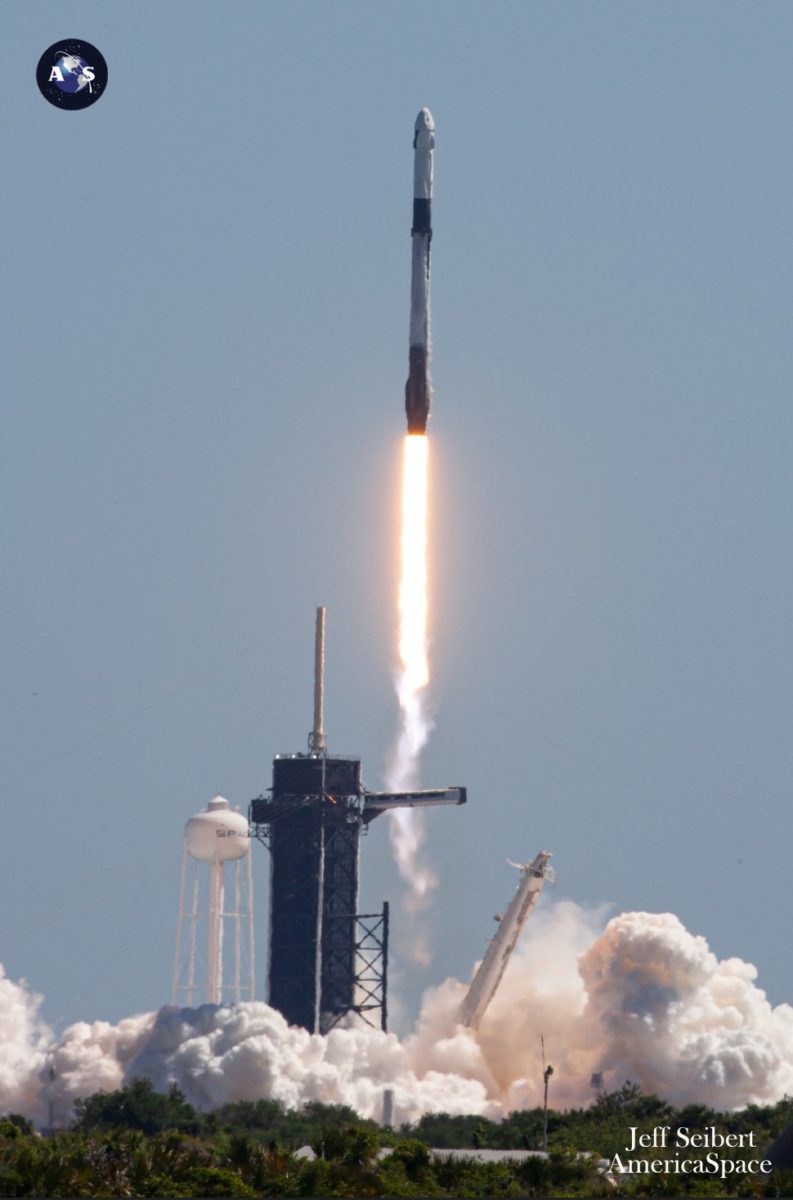
That will leave the booster’s second stage, powered by a single Merlin 1D+ Vacuum engine, to execute a pair of “burns” to lift the 10,000-pound (4,500-kilogram) Arabsat-7B the remainder of the way uphill. The giant satellite has a payload power of 17.8 kilowatts and is targeting a 15-year operational lifetime at 26 degrees East longitude.
Arabsat-7B, also known as “BADR-8”, was built by Airbus, with contracts having been awarded in August 2020. Its on-board electric propulsion system is expected to allow it to reach its geostationary orbital “slot” in four to five months.
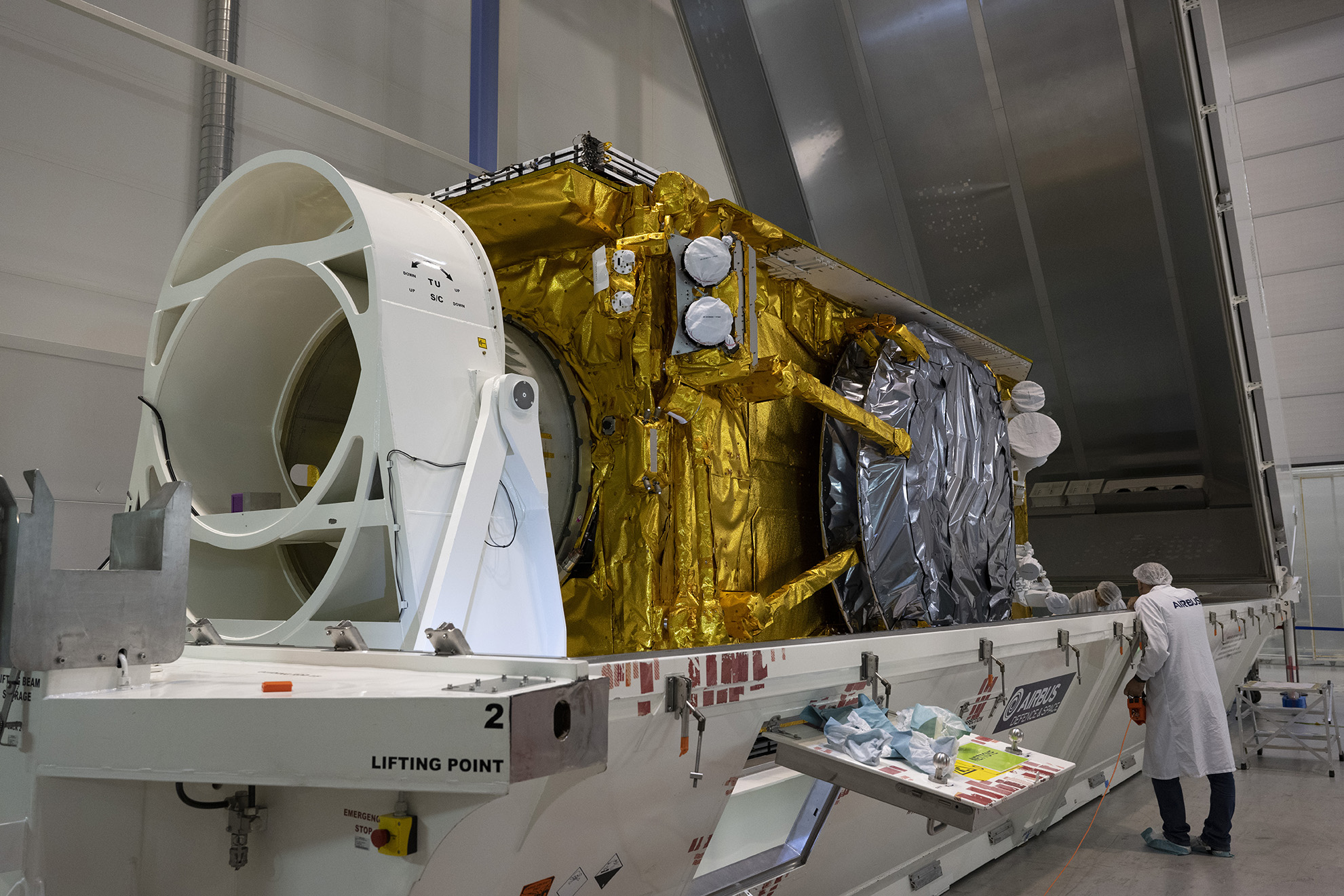
The satellite also includes Airbus’ TELEO optical communications payload demonstrator, intended to facilitate very high-capacity analog optical feeder-link communications and support a new generation of optical communications technologies for future missions, with a high resistance to electronic jamming. Arabsat-7B was flown to Florida last month, where it underwent fueling and encapsulation into the Falcon 9 payload shroud.
The first Merlin 1D+ burn is timed for a standard six minutes, before the stack enters a prolonged period of coasting, prior to a second burn, just a minute in duration, which will occur just shy of a half-hour into tonight’s flight. Arabsat-7B is set for release into space about 37 minutes after launch, becoming the second Saudi Arabian flown by SpaceX, after Arabsat-6A on the Falcon Heavy’s first operational mission in April 2019.
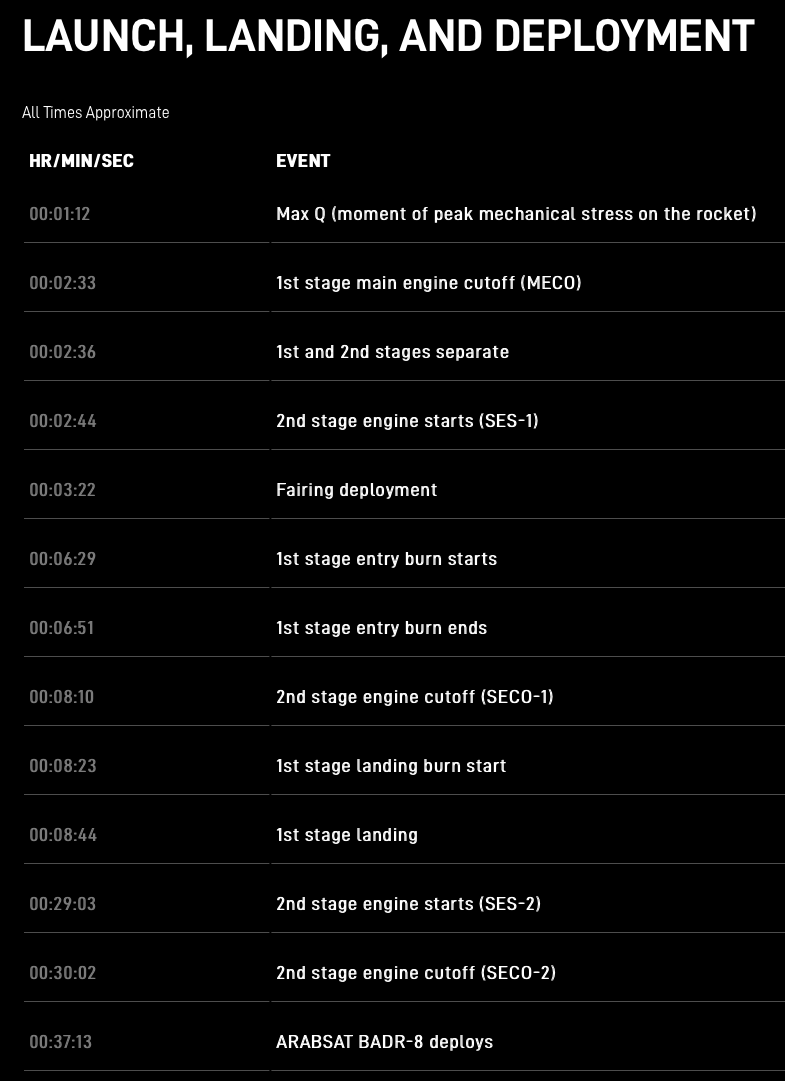
Just last September, Arabsat also signed contracts with SpaceX to launch its Arabsat-7A geostationary communications satellite later this decade to an eventual destination at 30.5 degrees East longitude in support of Europe, Middle East and Africa (EMEA) customers. Built by Thales Alenia Space, it is a fully flexible Software-Defined Satellite (SDS), based on the Space Inspire (INstant SPace In-orbit REconfiguration) platform to facilitate “seamless telecom mission and services reconfiguration”, as well as “instant in-orbit adjustment to broadband connectivity demand and superior video broadcasting performance, while maximizing the effective use of satellite resources”.





